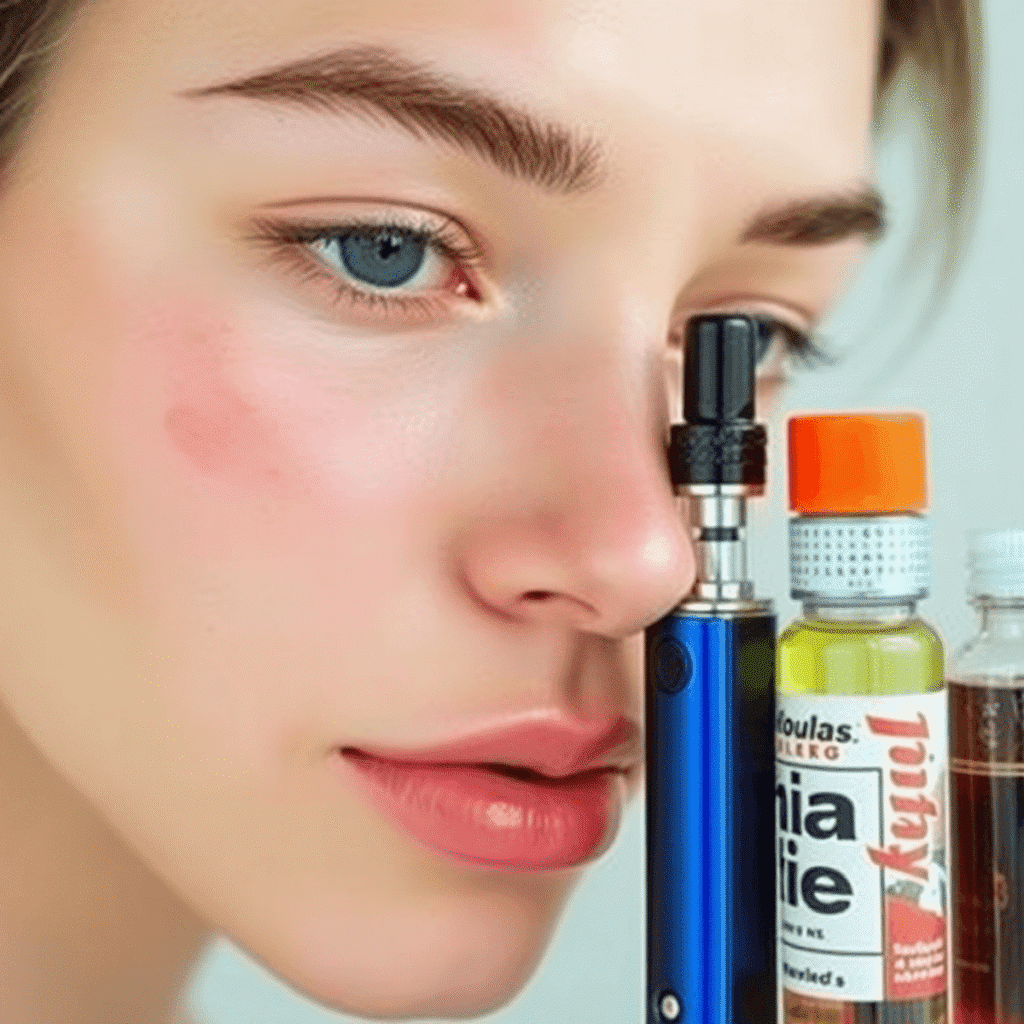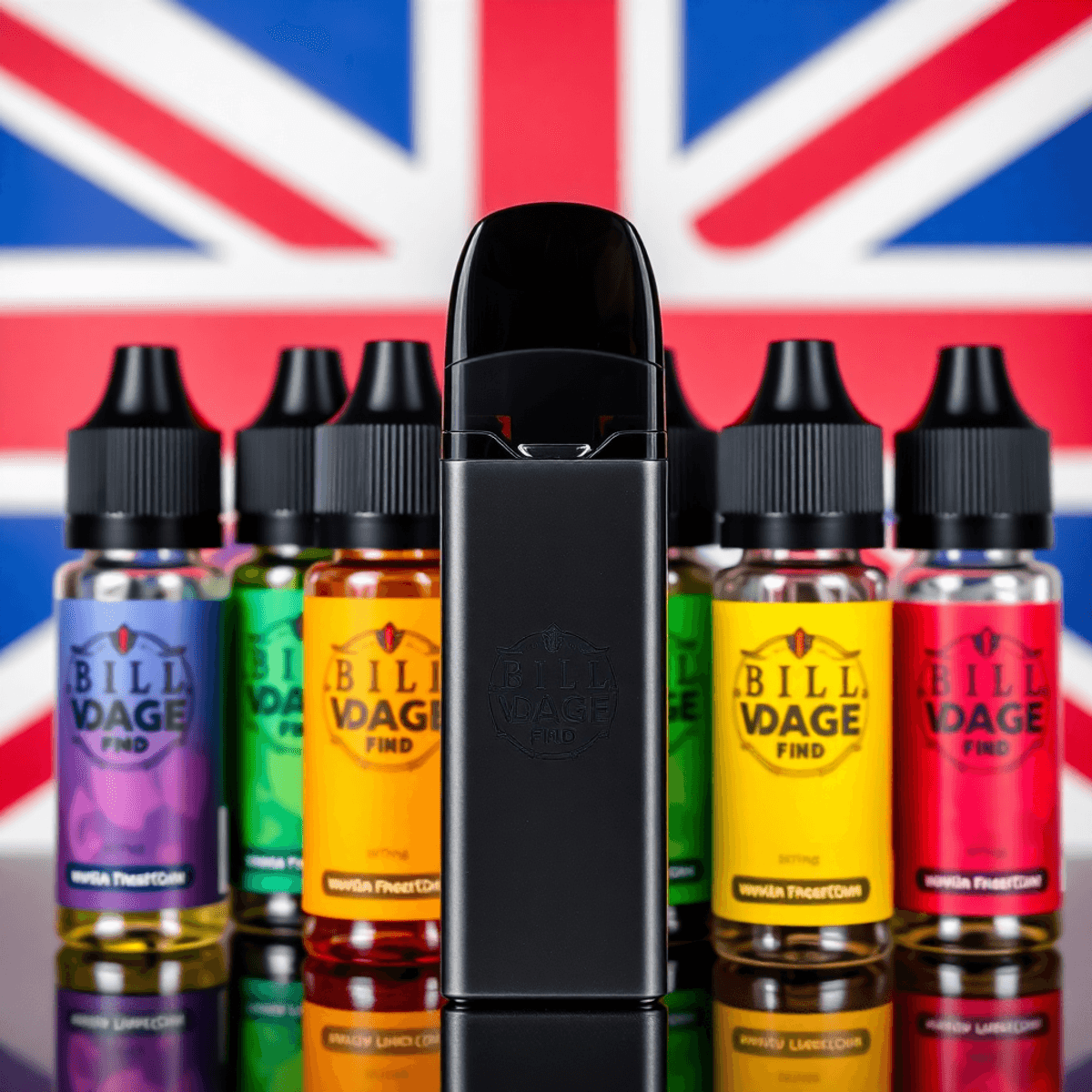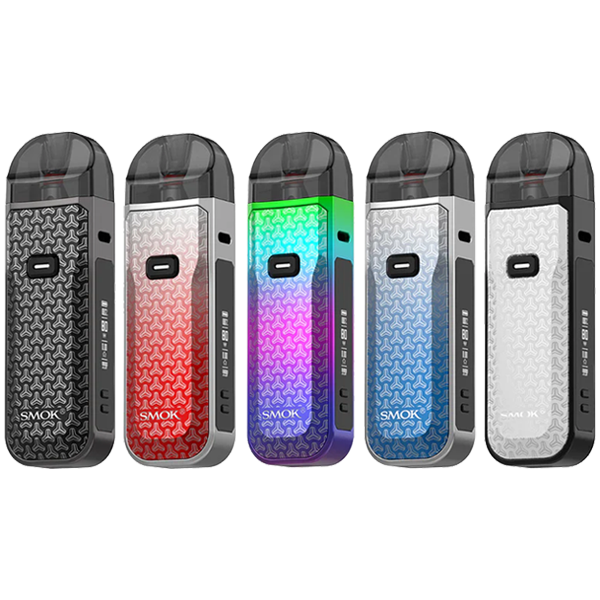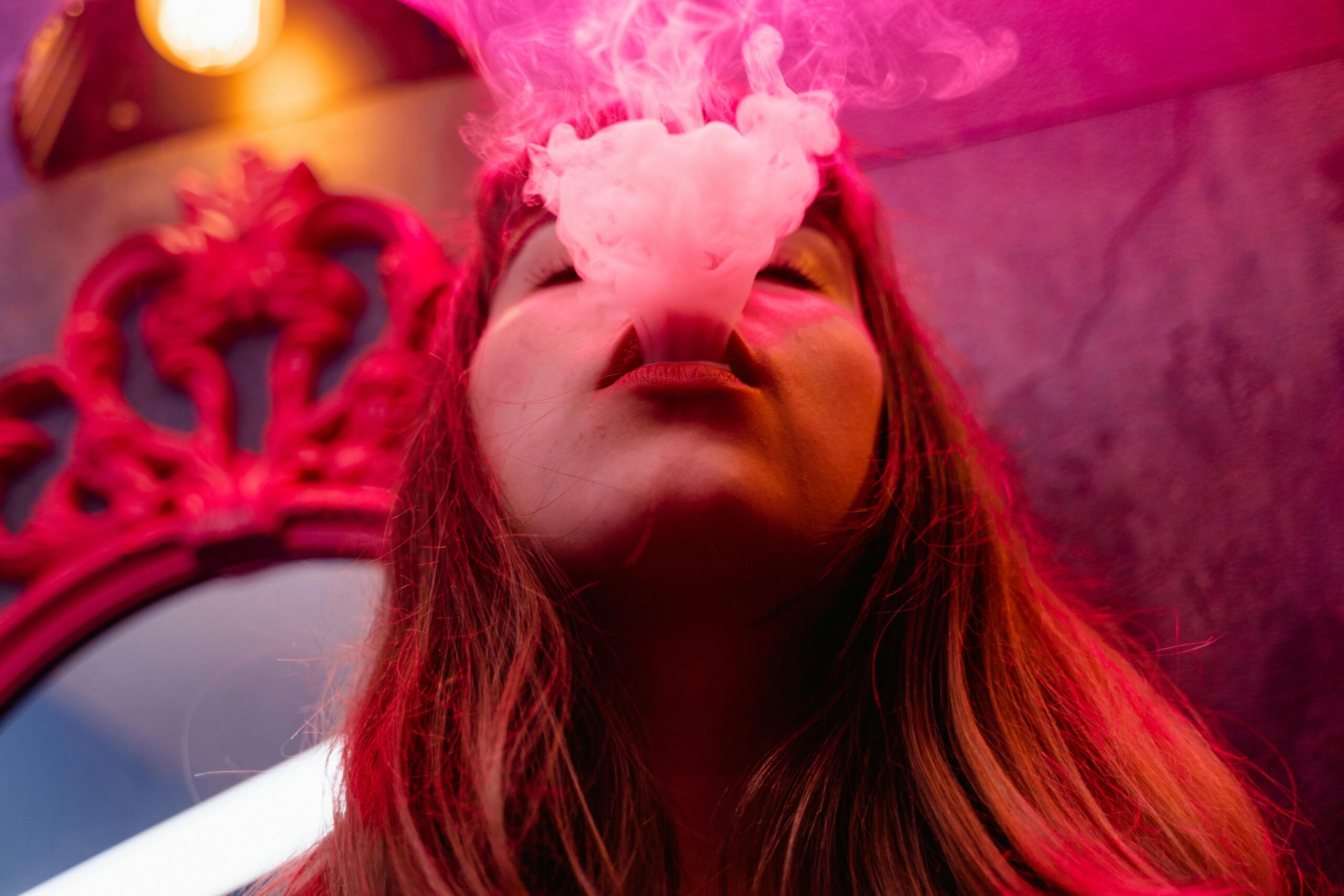The rising popularity of vaping has sparked questions about its effects on skin health, particularly its potential role in causing or worsening acne. Vaping involves inhaling vapour created by heating e-liquids in electronic devices, offering an alternative to traditional smoking. These e-liquids contain various compounds, including nicotine, propylene glycol and flavouring agents.
What is Acne?
Acne, a common skin condition affecting millions worldwide, occurs when hair follicles become blocked with oil and dead skin cells. This blockage can lead to:
- Whiteheads
- Blackheads
- Painful, inflamed spots
- Cystic lesions
The Link Between Vaping and Acne
Many vapers report changes in their skin condition after taking up e-cigarettes, raising concerns about a possible connection. The relationship between vaping and acne remains a topic of growing interest among dermatologists and researchers. This article delves into the scientific evidence linking vaping to skin problems, examining how e-cigarette components might affect your skin’s health.
In this article, we’ll explore real experiences from vapers and share expert insights to help you understand the potential impact of vaping on acne development.
Understanding Vaping and its Effects on Skin Health
The relationship between vaping and skin health centres on three key factors: nicotine content, chemical compounds and residual effects.
How Nicotine Affects Your Skin
Nicotine, a primary component in most e-liquids, acts as a vasoconstrictor that narrows blood vessels. This restriction reduces blood flow to the skin, limiting the delivery of essential nutrients and oxygen. The result? Skin cells receive fewer vital nutrients, leading to a dull complexion and compromised healing abilities.
The Impact of Chemical Compounds in E-Liquids
E-liquids contain various chemicals, including propylene glycol and vegetable glycerine, known for their dehydrating properties. These substances actively draw moisture from skin cells, causing:
- Increased skin dryness
- Disrupted natural oil balance
- Compromised skin barrier function
- Enhanced sensitivity to environmental factors
Understanding the Residual Effects of Vaping
The physical act of vaping creates a residual film that can settle on the skin, particularly around the mouth and chin areas. This vapour residue contains:
- Microscopic particles from e-liquid ingredients
- Heavy metals from device components
- Flavouring compounds
These substances can accumulate on the skin surface, potentially blocking pores and creating an environment where bacteria thrive. The combination of blocked pores and bacterial growth sets the stage for potential breakouts and skin irritation.
Research suggests that regular exposure to vaping residue can alter the skin’s natural microbiome, disrupting its delicate balance and potentially triggering inflammatory responses.
In addition to these effects, the type of nicotine used in vaping products can further complicate skin health. For instance, high-concentration nicotine shots may have more pronounced effects due to their quicker absorption rates.
The Science Behind the Link Between Vaping and Acne
The relationship between vaping and acne stems from three key biological mechanisms: vasoconstriction, inflammation and hormonal changes.
1. Vasoconstriction and Blood Flow
Nicotine, commonly found in traditional e-cigarettes, triggers blood vessel constriction, reducing blood flow to the skin. This decreased circulation limits the delivery of essential nutrients and oxygen to skin cells, hampering their ability to repair and regenerate. The restricted blood flow also traps bacteria and dead skin cells within pores, creating an ideal environment for acne formation. However, products such as 0mg Ezee E-cigarette cartridges, which contain no nicotine, may not have the same effect on blood flow and thus may not cause significant vasoconstriction. It’s interesting to note that the body’s homeostatic regulation of the vascular system could potentially mitigate some of these effects with healthier lifestyle choices.
2. Inflammatory Response
E-cigarette vapour contains numerous irritants that provoke an inflammatory response in the body. This inflammation can:
- Increase sebum production
- Trigger skin cell hyperkeratinisation
- Stimulate the growth of acne-causing bacteria
- Disrupt the skin’s natural barrier function
The type of e-liquid used can influence this response. For instance, using high-quality e-liquids like the Chew King 100ml Shortfill 0mg with a balanced VG/PG ratio might reduce irritation compared to lower quality options.
3. Hormonal Disruption
Research suggests that vaping affects hormone levels in the body. Nicotine and other chemicals found in e-cigarettes can:
- Alter androgen levels
- Disrupt cortisol production
- Impact insulin sensitivity
These hormonal changes often manifest as increased oil production and cellular turnover, two factors that significantly contribute to acne development. Studies indicate that users who vape regularly show higher levels of stress hormones, which can trigger or worsen existing acne conditions. Notably, excessive stress can lead to disruptions in adrenal gland function, further complicating hormone regulation as seen in adrenal gland disorders.
Specific Ways Vaping Can Worsen Acne Symptoms
Vaping can trigger distinct patterns of acne breakouts, particularly around the mouth area. Perioral acne, characterised by clusters of small bumps and pustules surrounding the lips, often develops in vapers due to direct contact with e-cigarette vapour and residue.
The Stress Cycle of Vaping and Acne
The relationship between vaping and stress responses creates a problematic cycle for acne sufferers:
- Physical stress from inhaling hot vapour
- Increased cortisol production
- Higher sebum production
- Clogged pores
- New breakouts
Chemical Irritants in E-Liquids
The chemical composition of e-liquids presents additional challenges for skin health. Many popular vaping flavours contain artificial sweeteners and synthetic compounds that can act as skin irritants:
- Cinnamon flavourings: Known to cause localised inflammation
- Vanilla compounds: Can trigger allergic reactions
- Mint derivatives: May lead to skin sensitivity
These flavouring agents create a hostile environment for sensitive skin types, leading to:
- Redness and irritation
- Compromised skin barrier
- Increased susceptibility to bacterial growth
- Acceleration of existing acne
User Experiences with Flavour Switching
Users who experience frequent skin reactions might notice these symptoms intensify when switching between different e-liquid flavours or increasing their vaping frequency. The combination of direct vapour contact, stress responses and chemical irritants creates optimal conditions for persistent acne development.
Potential Solutions for Vapers
For instance, using high-quality devices like the OXVA Xlim SQ Pro 2 Pod Vape Kit could potentially lessen some adverse effects due to better temperature control. Additionally, opting for replacement coils such as the AirsPops Bottle By AIRSCREAM, which are designed for specific vaping styles, may also help improve the overall experience.
On the other hand, choosing e-liquids wisely is crucial. For example, the Ohm Brew Bar Series Double Brew 100ml Shortfill offers a balanced and flavourful experience without compromising on quality. Similarly, the One E-Liquids Flavoured Nic Salts are TPD compliant and provide a delicious burst of satisfaction without harmful additives. Lastly, if you’re looking for something sweet without the adverse effects on your skin, consider trying the Bar Series Desserts 10ml Nic Salts, which are crafted to cater to sweet cravings while maintaining quality.
Impact of Vaping on Skin Aging and Acne Scarring
Vaping’s effects extend beyond active breakouts to influence long-term skin health and healing processes. Nicotine from e-cigarettes disrupts the skin’s natural collagen production – a vital protein responsible for maintaining skin elasticity and strength.
The interference with collagen synthesis manifests in several ways:
- Reduced skin firmness – Diminished collagen levels lead to less resilient skin texture
- Compromised skin barrier – Weakened structural support increases vulnerability to environmental damage
- Impaired healing abilities – Lower collagen production slows down the skin’s natural repair mechanisms
When acne lesions develop, the skin’s compromised healing capacity becomes particularly problematic. Studies show that vaping can extend the time required for wounds to heal by up to 50%. This delayed healing process leaves acne spots vulnerable to:
- Deeper scarring
- Post-inflammatory hyperpigmentation
- Textural irregularities
- Persistent redness
The combination of decreased collagen production and slower wound healing creates a challenging environment for acne-prone skin. Active lesions remain present for longer periods, increasing the likelihood of permanent scarring. The skin’s natural regenerative processes struggle to keep pace with new breakouts, leading to a cycle of prolonged healing and increased damage.
Recent clinical observations suggest that regular vapers often display signs of premature aging, including fine lines and reduced skin elasticity, particularly around areas where they exhale vapour from their devices.
Furthermore, research indicates that vaping may also lead to other significant dermatological issues such as eczema or psoriasis flare-ups due to its impact on the immune system and overall skin health. It’s crucial for individuals considering vaping or currently using e-cigarettes to be aware of these potential risks and take necessary precautions. For more detailed insights into how vaping affects your skin health, consider exploring this comprehensive study on the subject.
The Journey of Quitting Vaping: Effects on Acne Over Time
Quitting vaping triggers significant changes in skin health, with many users experiencing a temporary increase in acne breakouts during the initial weeks. This phenomenon stems from the body’s natural detoxification process and hormonal adjustments post-vaping cessation.
The First 2-4 Weeks After Stopping Vaping
The first 2-4 weeks after stopping vaping often bring:
- Increased oil production
- Heightened skin sensitivity
- Temporary inflammation
- Stress-related breakouts
These symptoms mirror nicotine withdrawal effects, as the body works to restore its natural balance. The temporary worsening of acne can feel discouraging, yet it signals the beginning of the healing process. It’s essential to understand what to expect when you quit smoking, as these experiences are part of a broader recovery journey.
4-8 Weeks of Sustained Abstinence from E-Cigarettes
Research indicates marked improvements in skin health typically emerge after 4-8 weeks of sustained abstinence from e-cigarettes. Users report:
- Reduced redness and inflammation
- Better moisture retention
- Smaller-looking pores
- Fewer breakouts
- Enhanced skin texture
Factors Influencing Recovery Timeline
The recovery timeline varies among individuals based on factors such as:
- Previous vaping habits
- Skin type
- Lifestyle choices
- Skincare routine
- Stress management
Many former vapers describe their skin as clearer, brighter and more resilient after the initial adjustment period. This improvement continues as the body’s natural healing mechanisms strengthen and restore optimal skin function.
Expert Opinions and Personal Experiences: Vaping’s Role in Acne Development
Leading dermatologists have raised significant concerns about the relationship between vaping and acne development. Dr Sarah Thompson, a London-based dermatologist, notes:
“Many of my patients who vape display a distinct pattern of inflammatory acne around the mouth and jaw area. The combination of nicotine-induced vasoconstriction and potentially irritating chemicals in e-liquids creates perfect conditions for breakouts.”
Clinical observations from skin specialists reveal a pattern:
- Increased sebum production in regular vapers
- Compromised skin barrier function
- Delayed healing of existing acne lesions
- Higher incidence of cystic acne in long-term users
Former vaper Lucy Matthews, 28, shares her experience: “After six months of heavy vaping, my skin became increasingly problematic. Three months after quitting, my complexion cleared dramatically. The deep, painful spots around my chin disappeared.”
Dr James Roberts, a research dermatologist at Manchester University, emphasises the importance of considering vaping’s impact on hormonal balance:
“Our research indicates that certain compounds in e-liquids might interfere with androgen levels, potentially triggering or worsening acne in susceptible individuals.”
These clinical observations align with patient reports documenting significant skin improvements post-vaping cessation. A recent UK dermatology clinic survey found that 67% of former vapers reported clearer skin within four months of quitting.
Conclusion
The evidence points to a significant connection between vaping and acne development. Through our exploration of scientific research, expert opinions and real-world experiences, we’ve seen how e-cigarette use can trigger various skin issues:
- Nicotine-induced vasoconstriction affecting skin health
- Dehydration from vaping chemicals
- Inflammatory responses leading to breakouts
- Delayed wound healing and increased scarring risk
- Hormonal disruptions impacting acne development
The decision to vape extends beyond immediate satisfaction – it carries potential consequences for long-term skin health. While individual experiences vary, the documented improvements in skin condition after quitting vaping cannot be ignored.
For those concerned about their skin health, considering alternatives to vaping might be worthwhile. Your skin serves as a vital organ and visual representation of overall health. Making informed choices about vaping, alongside proper skincare routines and lifestyle habits, can help maintain clear, healthy skin for years to come.
FAQs
Does vaping cause acne?
Vaping can contribute to acne development due to the various components in e-cigarettes, such as nicotine and chemicals in e-liquids, which may cause skin dehydration, pore-clogging residues, inflammation and hormonal disruptions that exacerbate acne symptoms.
How does nicotine in vaping affect skin health and acne?
Nicotine causes vasoconstriction, reducing blood flow to the skin, which impairs nutrient delivery and waste removal. This effect can worsen acne by promoting inflammation and delaying wound healing, leading to prolonged acne lesions and increased risk of scarring.
Can vaping worsen specific types of acne like perioral acne?
Yes, vaping is linked to flare-ups of perioral acne due to skin irritation from flavouring agents in vape liquids and stress responses triggered by nicotine intake. These factors can exacerbate redness, inflammation and breakouts around the mouth area.
What impact does vaping have on skin aging and acne scarring?
Vaping negatively affects collagen production, essential for maintaining youthful skin and effective wound healing. Reduced collagen synthesis delays recovery from acne lesions and increases the likelihood of scarring, accelerating visible signs of skin aging.
What changes occur in acne symptoms after quitting vaping?
After quitting vaping, some individuals may experience a temporary worsening of breakouts due to hormonal adjustments. However, sustained abstinence typically leads to long-term improvements in skin health, including reduced acne severity and better overall complexion.
What do experts say about the relationship between vaping and acne?
Dermatologists acknowledge a potential link between vaping and acne development caused by nicotine-induced vasoconstriction, inflammation and chemical exposure from e-liquids. Many personal experiences also report clearer skin following cessation of e-cigarette use, supporting expert opinions.




